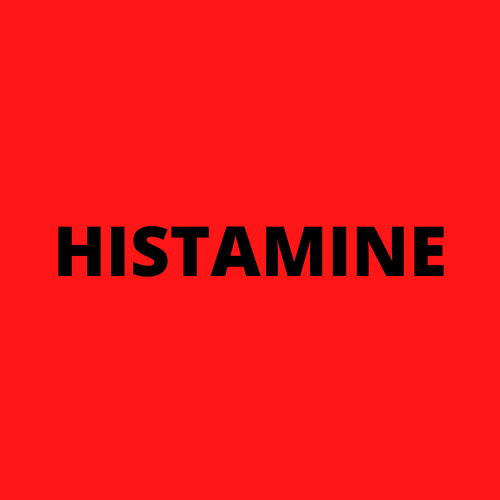SHELLFISH ALLERGY
Key Allergens
Shellfish are edible inverterbrates, usually seafood like crustaceans and molluscs. Crustaceans include lobster, prawn, scampi, crab and shrimp. Molluscs include oysters, abalone, snails and squid. In Europe molluscs and crustaceans are considered to be 2 separate food groups whose allergens need to be declared in packaged food. In the US these are both grouped under the term 'shellfish'.
The WHO allergen index covers 21 species of crustaceans and 6 species of molluscs linked to allergic reactions and 7 main groups of allergens.
21 species of shellfish have been found to contain the allergen Tropomyosin, which is a protein found in exoskeletons.
Arginine Kinase allergens have been found in 6 species, mostly in shrimp.
Myosin allergens have been found in 6 species, mostly shrimp and crab. Myosin is a protein found in animals involved in movement and muscle contraction.
Sarcoplasmic calcium binding protein allergens have been found in 5 species of shrimp and crab. These are proteins found in the muscle of crustaceans.
These identified allergens are related to food allergy - there are an additional 146 allergens identified in this group which link to airborne and airway allergens, which means just cooking shellfish can be a problem for sufferers of this allergy.
The WHO allergen index covers 21 species of crustaceans and 6 species of molluscs linked to allergic reactions and 7 main groups of allergens.
21 species of shellfish have been found to contain the allergen Tropomyosin, which is a protein found in exoskeletons.
Arginine Kinase allergens have been found in 6 species, mostly in shrimp.
Myosin allergens have been found in 6 species, mostly shrimp and crab. Myosin is a protein found in animals involved in movement and muscle contraction.
Sarcoplasmic calcium binding protein allergens have been found in 5 species of shrimp and crab. These are proteins found in the muscle of crustaceans.
These identified allergens are related to food allergy - there are an additional 146 allergens identified in this group which link to airborne and airway allergens, which means just cooking shellfish can be a problem for sufferers of this allergy.
Food Intolerances




Shellfish are a food which can be high in histamine, so is not suitable for people following a low histamine diet. The amount of histamine starts to increase once caught, so improperly handled and refridgerated fish can cause what is called 'scrombroid poisoning'. The symptoms of this are very similar to a severe allergic reaction, so are often confused.
High histamine and high sulphites often go hand in hand. Shellfish are also considered to be moderate in sulphites. Very freshly caught and cooked food is lower in sulphites and those that are processed, smoked, canned or preserved are higher in sulphites. Sulphites are inorganic salts used in preservations and have the potential to cause symptoms of food intolerance to those sensitive to sulphites, this food intolerance is more common in asthmatics. An improvement in symptoms can be made with a change to a low sulphite diet.
FODMAP is linked to plants, so most meats and fish are low in FODMAP and suitable for people following a low FODMAP diet. FODMAP stands for Fermentable oligosaccharides, disaccharides, monosaccharides and polyols. Foods high in FODMAPs can cause symptoms of food intolerance, affecting the gastro intestinal system and this can be mistaken for a true IgE food allergy.
Like FODMAP, salicylate intolerance is linked to plants, so shellfish are suitable for people following a low salicylate diet. Salicylates have the potential to cause gastrointestinal food intolerance symptoms in people who are sensitive to salicylates.
You can read more about Food Intolerances on the dedicated Food Intolerance Page.
Associated Syndromes
Shellfish Allergy is not currently linked with any allergic syndromes.
Cross Reactivity
Catfish, some types of salmon and tilapia are types of fish which have also been identified as containing the allergen tropomyosin, there may be cross reactivity between eating certain types of fish and shellfish.
Crustaceans are distantly related to dust mites, midges, mosquitoes and cockroaches, all coming under the phylum Arthropoda. You often find people with allergies to certain seafoods also have dust mite and insect allergies as they share some of the same allergenic proteins.
You can download a Shellfish Allergy Factsheet from the Allergy Resources Ko-fi Shop for just $0.90 (£0.69 or €0.82). This has up to date information on which foods contain linked allergens and what foods to avoid if you think you have an allergy to shellfish.
Crustaceans are distantly related to dust mites, midges, mosquitoes and cockroaches, all coming under the phylum Arthropoda. You often find people with allergies to certain seafoods also have dust mite and insect allergies as they share some of the same allergenic proteins.
You can download a Shellfish Allergy Factsheet from the Allergy Resources Ko-fi Shop for just $0.90 (£0.69 or €0.82). This has up to date information on which foods contain linked allergens and what foods to avoid if you think you have an allergy to shellfish.
Resources
Websites
Food Allergy Canada - Crustaceans and Molluscs
Anaphylaxis Campaign - Shellfish
ATP Science - Salicylate Foods
Articles and Journals
Shrimp allergy leading to severe transfusion reaction: A case report, 2024
IgE-Mediated Shellfish Allergy in Children, 2023
Accidental Reactions to Foods: Frequency, Causes, and Severity, 2022
Crustacean Allergy in South Africa, 2017
Shellfish allergens: tropomyosin and beyond, 2016
In vivo diagnosis with purified tropomyosin in mite and shellfish allergic patients, 2016
Insects and Their Connection to Food Allergy, 2016
Snow crab allergy and asthma among Greenlandic workers – a pilot study, 2012
Selective Allergy to Lobster in a Case of Primary Sensitization to House Dust Mites, 2009
Tropomyosin: An Invertebrate Pan–Allergen, 1999
Let me know if you found any of these interesting or useful.
If you spot an article or research that you think is interesting you can message me or tag me on Facebook or Twitter - links at the bottom of the page.